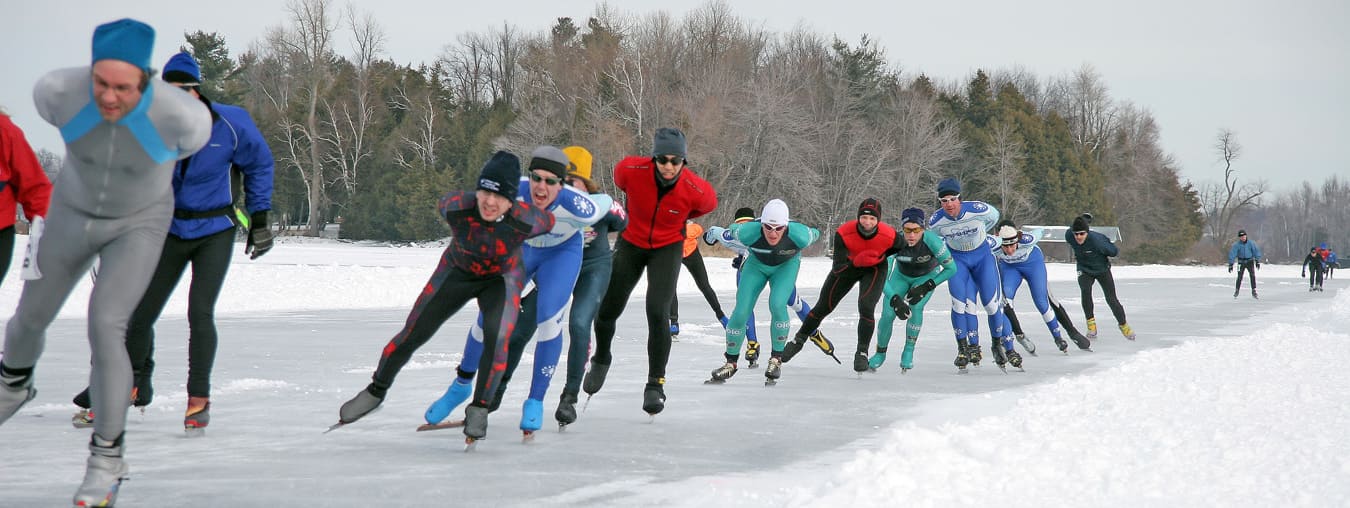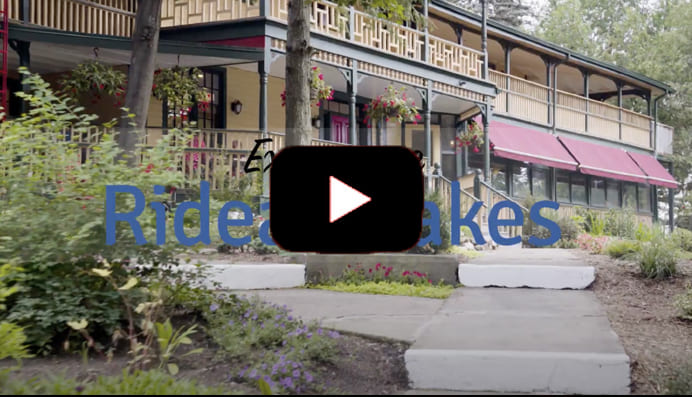There are a number of legends but the simplest one is that a settler kept bragging about going to California during the Gold Rush and never made it past this area. The name is first mentioned in a newspaper article about 1863 talking about a concert put on by school children at Jones Falls. We know from the Ripley diaries in the early 1870s that the name was already in common use by that time.
 The York BrothersIt appears as if the first European settlers started to put down roots in this area as early as the 1840s, according to the diary of lockmaster Sweeney of Jones Falls. The large Muldoon family lived in a log cabin on the shores of Sand Lake and Shipman Baxter was located near Troy Lake although he later moved to another location. The land was apparently very wild, covered with cranberry swamps and large forests. Sweeney at one point recorded a young girl who was lost on this side of the locks and found dead from exposure. Various lumber camps appear to have been located throughout the area in those early years.
The York BrothersIt appears as if the first European settlers started to put down roots in this area as early as the 1840s, according to the diary of lockmaster Sweeney of Jones Falls. The large Muldoon family lived in a log cabin on the shores of Sand Lake and Shipman Baxter was located near Troy Lake although he later moved to another location. The land was apparently very wild, covered with cranberry swamps and large forests. Sweeney at one point recorded a young girl who was lost on this side of the locks and found dead from exposure. Various lumber camps appear to have been located throughout the area in those early years.
By the 1860s, a number of other residents appeared in the area. Chester Stewart (also spelled Stuart) was operating a boatbuilding operation on Sand Lake that appears to have employed up to 20 individuals. One notable settler was Charles Smith Burtch, an experienced carpenter who later built the first long bridge connecting California to Jones Falls in the 1880s. Smith married Jane Rancier, a widow with five daughters. Her first husband had frozen to death one winter on an island in Sand Lake. The Burtches of California are descended from Jane Rancier’s second family with Charles. Josiah Updegrove also arrived about this time building a log cabin near Whitefish Lake. The Simpson family by the 1850s had put down roots in the more remote section of California. All these settlers were involved in subsistence farming as well as lumbering and some mining of potash.
 California Cheese Factory, 1908During the 1880s, John Dargavel of Elgin erected a cheese factory. The farmers had run out of logging and collecting bark for tanning. As a result, Dargavel thought that the dairy industry would be a good fit due to the farms in the area. He invested in cattle for the farmers and within several years most of the residents had switched to the production of dairy. Proceeds for the cattle were paid through their contribution to the factory. By the mid-1890s the community was thriving again and in 1908, Dargavel built a new model brick factory. It was considered to be the most modern in the township. He also operated a model farm of 275 acres which was used as a teaching farm.
California Cheese Factory, 1908During the 1880s, John Dargavel of Elgin erected a cheese factory. The farmers had run out of logging and collecting bark for tanning. As a result, Dargavel thought that the dairy industry would be a good fit due to the farms in the area. He invested in cattle for the farmers and within several years most of the residents had switched to the production of dairy. Proceeds for the cattle were paid through their contribution to the factory. By the mid-1890s the community was thriving again and in 1908, Dargavel built a new model brick factory. It was considered to be the most modern in the township. He also operated a model farm of 275 acres which was used as a teaching farm.
The 1880s also saw new families in the area. Freeman Jackson operated a blacksmith shop and Charles Hutchings from Somerset in England had married Mary Jackson and started a large family. One of their sons, Sam, a lifetime resident lived to be 101. Sam was a noted decoy carver who has works in various collections across North America. The Gamble and Sly families as well put down roots and descendants live in California to this day.
 California School, 1953The school was replaced about 1895 with another structure which operated until the early 1960s. As well, in 1905, a Union church was erected with services for Anglicans, Methodist and Baptists. The brick church was usually operated under the guidance of student ministers and was particularly active during the summer months. At present, the church, school and cheese factory are all preserved in private hands.
California School, 1953The school was replaced about 1895 with another structure which operated until the early 1960s. As well, in 1905, a Union church was erected with services for Anglicans, Methodist and Baptists. The brick church was usually operated under the guidance of student ministers and was particularly active during the summer months. At present, the church, school and cheese factory are all preserved in private hands.
Today California, a loosely defined area on the other side of Jones Falls, is the site of many cottages on Troy, Opinicon, and Sand Lakes with a community organization and an active beautification committee. The park is covered with daffodils each spring.
By Sue Warren
Municipal Heritage Advisory Committee, Township of Rideau Lakes


















